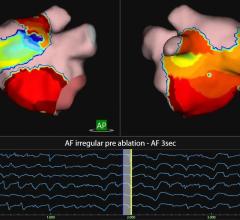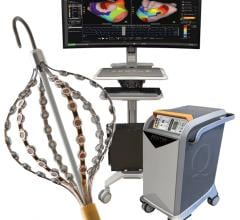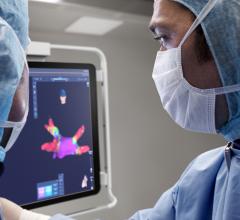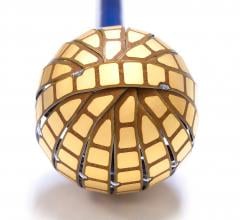May 4, 2011 – At Heart Rhythm 2011, the Heart Rhythm Society’s 32nd annual scientific sessions in San Francisco, Royal Philips Electronics and the Heart Rhythm Society (HRS) have teamed up to showcase current solutions and future developments that shape the diagnosis and minimally invasive treatment of heart rhythm disorders.
Heart rhythm disorders are caused by disturbed electrical signals that regulate the heart and can lead to serious health risks, including heart failure or stroke. Many rhythm disorders can be treated using minimally invasive electrophysiology (EP) procedures, carried out in an EP lab. These procedures require image guidance and interventional tools that enable physicians to achieve the optimum clinical outcome, while minimizing adverse events.
The industry collaboration between Philips and the Heart Rhythm Society, along with other industry partners, is displayed in the Networked EP Lab. The lab is an educational pavilion where advanced clinical technologies, new processes and integrated data-sharing solutions are demonstrated to help EP teams optimize patient safety, outcomes and improve procedural management.
“The Networked EP Lab will provide attendees with an opportunity to see what state-of-the-art technology looks like, learn best practices, share ideas and walk away with information to streamline their efforts,” said the Heart Rhythm Society’s Scientific Sessions Abstract Chair, Hugh Calkins, M.D., FHRS. “Having all the components in the Networked EP Lab communicate with each other in combination with the most advanced technology will significantly impact education, teaching and patient care, ultimately improving both patient safety and outcomes of treatment.”
In the Networked EP Lab, integration of real-time information from all relevant technologies and patient health records is illustrated. Harnessing vital procedural and imaging information from various sources, such as electrograms, 3-D mapping and imaging systems, a connected lab provides EP team members with the information they need to take confident decisions. For efficient workflow, all information is presented on one display that can be controlled from the same keyboard and mouse.
As part of the company’s vision for the future of EP, Philips Research is presenting concepts it is exploring for next-generation EP lab innovations. These include new approaches to real-time feedback during catheter ablation procedures and a new shape sensing technology that can provide images of the 3-D shape and position of interventional instruments in real time.
Finally, the Networked EP Lab also features presentations from leading experts in the field of electrophysiology to illustrate the clinical benefits of integrated technologies in EP labs and of sharing patient data through common electronic health care infrastructures.
For more information: www.philips.com


 May 15, 2023
May 15, 2023 








